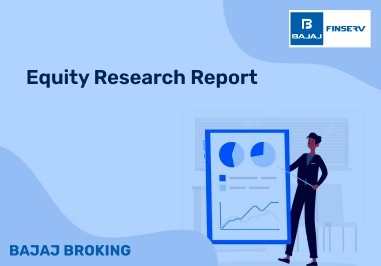A contingency fund is a financial reserve set aside to handle unexpected expenses or emergencies, ensuring stability during uncertain times. It helps individuals manage situations like medical emergencies or job loss without financial strain. These funds are usually invested in liquid assets for easy access when needed.
Contingency funds can include personal savings, insurance payouts, or government reserves like the Contingency Fund of India. They can also complement investment strategies, including mutual funds, to maintain financial security.
Understanding Contingency Fund of India in Detail
The Contingency Fund of India is a vital financial reserve established to address unforeseen emergencies such as natural disasters, wars and other critical situations that require immediate funding. Managed by the Reserve Bank of India (RBI), this fund ensures that the government can swiftly respond to urgent financial needs without going through the lengthy parliamentary approval process. The contingency funds meaning is rooted in its ability to provide a safety net for the nation during times of crisis. The funds are drawn from the corpus of the Contingency Fund of India, which is a predetermined amount established by the Parliament. This reserve is essential for maintaining stability and order during national emergencies, allowing the government to take prompt action in dire situations, ultimately contributing to national resilience. Understanding the mechanisms of these types of contingency funds can enhance public awareness about financial management and preparedness at both individual and governmental levels.
What is the Formula for a Contingency Fund?
The formula for calculating a contingency fund provides a structured approach to determining the amount needed to address unforeseen expenses effectively. It can be expressed as:
Contingency cost = Estimated Cost Impact x Probability Percentage.
Probability Percentage: This represents the likelihood of an unexpected expense occurring.
Estimated Cost Impact: This refers to the anticipated financial burden that may arise from the contingency event.
Understanding contingency funds meaning is crucial for effective financial planning, as these funds help mitigate the risks associated with sudden financial demands. Various types of contingency funds can be established, including personal savings, emergency funds and even provisions set by governmental bodies like the Contingency Fund of India. Additionally, a well-structured contingency fund can complement a diversified investment strategy, including options like a mutual fund, ensuring financial preparedness while maintaining growth potential. This proactive approach allows for better management of financial uncertainties and enhances overall financial stability.
Examples of Contingency Funds
Examples of contingency funds highlight their significance in both government and personal finance. A key example is the Contingency Fund of India, which is allocated for unforeseen national expenses, enabling the government to respond swiftly to emergencies like disaster relief or military operations.
Businesses also create their own contingency funds to manage unexpected operational costs, such as legal disputes or equipment failures. By designating resources for these situations, companies can alleviate financial strain and maintain stability.
On a personal level, individuals can establish contingency funds for emergencies, including savings for unexpected medical bills, job loss or urgent repairs. Understanding the contingency funds meaning and various types of contingency funds aids in effective financial planning. These funds not only provide peace of mind but also ensure financial stability during challenging times. By creating robust contingency funds, both governments and individuals can better navigate uncertainties, safeguarding against future adversities while allowing for investments, such as a mutual fund.
What is the Optimum Size of a Contingency Fund?
Determining the optimum size of a contingency fund is essential for effective financial planning. A commonly recommended guideline is to maintain an amount equivalent to 3 to 6 months of living expenses. However, this figure may vary based on individual circumstances, such as family size, income stability and existing medical conditions. For example, if monthly expenses are approximately £2,500, a contingency fund between £7,500 to £15,000 would be prudent. This fund should not include discretionary expenses like entertainment but should cover essential costs such as housing, food and healthcare. Regularly reviewing and adjusting the fund size in accordance with lifestyle changes and economic conditions is advisable. An adequate contingency fund provides a financial cushion, allowing for continued progress toward long-term financial goals even in times of
Who Holds the Contingency Fund of India?
The Contingency Fund of India is primarily held and managed by the Reserve Bank of India (RBI). This fund is distinct from other governmental financial reserves, as it is specifically designed to address urgent and unforeseen expenses that the government may incur. By placing the fund under the RBI's management, the government ensures that there is a streamlined process for withdrawal without requiring prior parliamentary approval. This arrangement allows for prompt action in response to national emergencies, facilitating the allocation of resources as needed. The corpus of this fund is set by legislation, providing a financial safety net that empowers the government to respond swiftly and effectively to any crisis that may arise, thereby maintaining national stability and public confidence.
Corpus of the Contingency Fund of India
The corpus of the Contingency Fund of India is a predetermined amount set by the Parliament, which serves as the financial backbone for addressing unexpected national expenses. This corpus allows the government to respond rapidly to emergencies, such as natural disasters or public health crises, without the delay associated with parliamentary procedures. Initially, this fund was established with a corpus of ₹500 crore, which has been revised over the years to meet the increasing needs of the nation. The ability to withdraw from this corpus without prior legislative approval is a crucial feature that distinguishes it from other government funds. This mechanism ensures that the government can maintain essential services and support during times of crisis, reinforcing the importance of having a robust financial framework in place for national emergencies.
How to Maintain a Contingency Fund?
A contingency fund must remain liquid and easily accessible to effectively cover emergencies. If you invest your emergency savings, ensure that you can quickly liquidate those investments with minimal tax implications.
Short-duration Debt Funds
Short-duration debt funds are a practical choice for contingency funds due to their low risk and potentially higher returns than traditional savings accounts. These funds invest in debt instruments with shorter maturities, helping to reduce interest rate risk. Although not entirely risk-free, they balance yield and safety, making them suitable for growing emergency savings while ensuring liquidity.
Savings Account
A savings account is one of the most secure types of contingency funds, offering interest on deposits and quick access to cash in emergencies. When selecting a savings account, prioritise competitive interest rates and low fees. Accounts with sweep-in facilities can automatically transfer surplus funds to fixed deposits, enhancing returns while ensuring liquidity for unexpected expenses.
Cash
Maintaining a certain amount of cash is crucial for contingency funds, providing immediate access in emergencies. While digital banking is convenient, having cash on hand is advantageous for urgent payments, such as medical expenses or repairs. Keeping a reasonable cash reserve strikes a balance between accessibility and overall security, ensuring readiness for unexpected financial challenges.
FD Account
A fixed deposit (FD) account is an excellent option for a contingency fund, offering guaranteed returns while securing your capital. By opening an FD account with a reputable bank, individuals can lock in funds at higher interest rates than standard savings accounts. Ensure the account allows early withdrawals with minimal penalties to maintain access to funds when needed, providing peace of mind.
What are the Benefits of Contingency Fund?
Maintaining a contingency fund offers numerous benefits that significantly enhance financial stability.
Shields Against Additional Debt
Maintaining contingency funds effectively shields individuals from the burden of additional debt. When unexpected expenses arise, a well-established emergency fund can cover these costs without resorting to high-interest loans or credit cards. This proactive approach safeguards financial health, preventing debt accumulation that can jeopardise long-term financial stability and hinder progress toward financial goals, such as retirement or investment in a mutual fund.
Reduces Stress
A contingency fund significantly reduces stress associated with financial emergencies. Knowing that readily accessible funds are available in times of crisis alleviates anxiety, allowing individuals to respond calmly to unexpected expenses. This financial cushion empowers better decision-making during stressful situations, enabling clearer thinking and more effective problem-solving, which ultimately contributes to enhanced overall well-being and stability.
Better Decision Making
Having a distinct contingency fund facilitates better decision-making regarding finances. By clearly separating funds for daily living from those reserved for emergencies, individuals can make more informed choices. This financial clarity helps in evaluating spending habits and prioritising expenses, ultimately leading to improved financial management. Effective decision-making supported by contingency funds allows individuals to maintain control over their financial future.
Meet Financial Goals
Utilising a contingency fund enables individuals to meet unexpected costs without derailing their long-term financial objectives. When unforeseen expenses arise, having an emergency fund ensures that regular savings and investment plans remain intact. This allows individuals to stay focused on their goals, such as retirement planning or building wealth through various types of contingency funds, including investments in a mutual fund.














